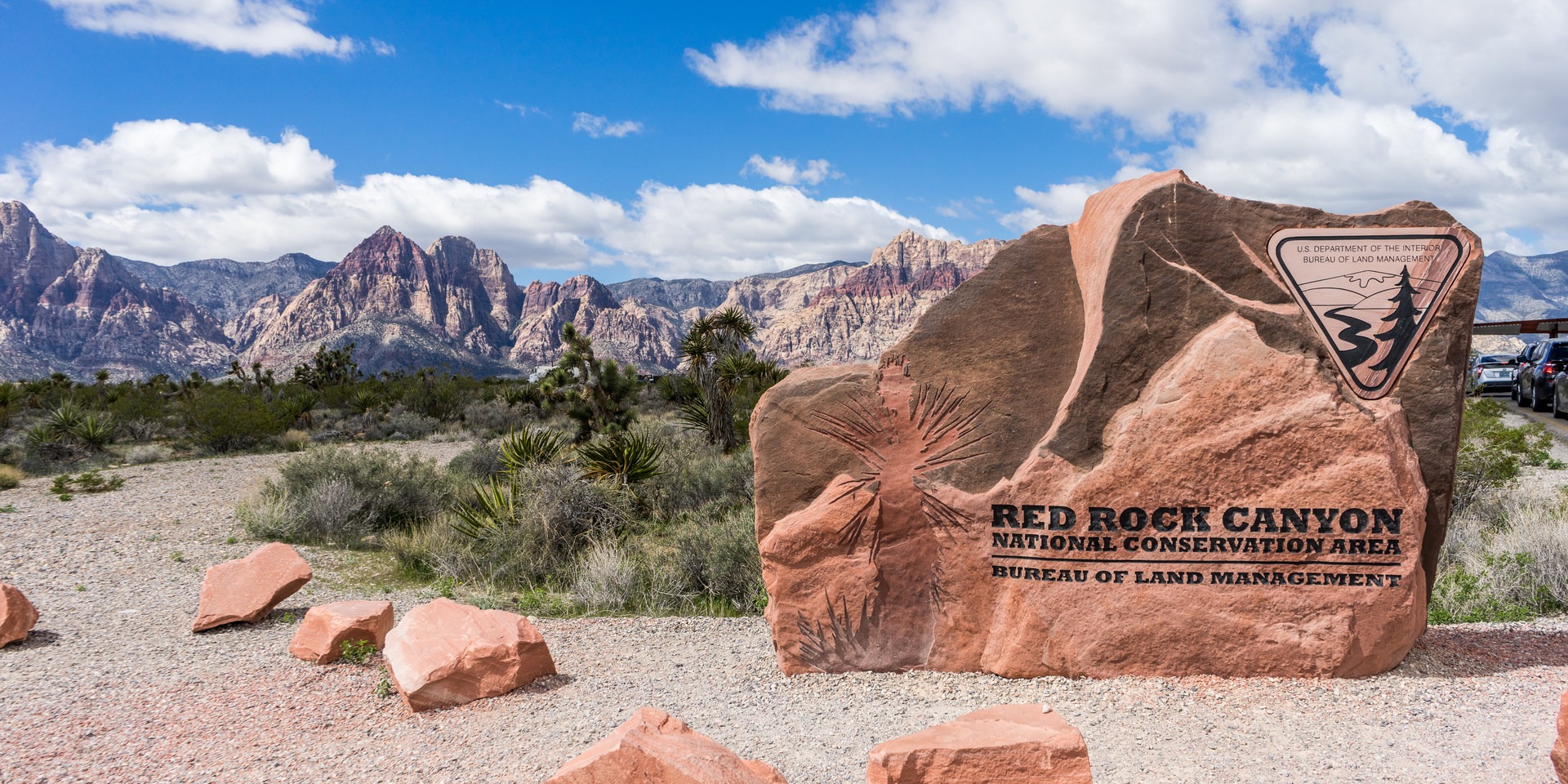You are here
Considered one of the top five climbing destinations in the United States, Red Rock Canyon National Conservation Area is at once an urban park, a wilderness refuge, and a recreation area for people of many different outdoor interests. The park is a perfect bookend to its counterpart on the eastern side of Las Vegas, Valley of Fire State Park, sharing some of the same Aztec sandstone rock formations built from ancient sand dunes that spanned the area 150 million years ago. Today Red Rocks is admired by day-trippers visiting the sights of Las Vegas, locals looking for great hiking near home, and rock climbers who come from all over the world to explore more than 2,000 named routes.
Any visit to the park should begin with a stop at the visitor center to talk the the rangers about conditions and recommendations. There is an entry fee for the Scenic Loop Drive and nearly all hikes and climbs start along this road. The loop is worth doing even if time is short as it shows off the entire basin surrounded by peaks and canyons. It can take a few hours to do the 13-mile road, stop at all the viewpoints, and explore a trail or two. The popular Red Rock Campground is a few miles from the entrance to the Scenic Loop and is the only place to camp anywhere close to the park.
Rock Climbing
Epinephrine (5.9, 1,600 feet), Triassic Sands (5.10, 700 feet) and Crimson Chrysalis (5.8+, 1,000 feet) are a few of the outstanding expert routes that grace this park. There are also fields of 20-foot boulders, particularly in the Kraft Mountain area, that are extremely popular with novice climbers. The peak climbing seasons are March through April and November. Most of the routes are off the Scenic Loop Drive, which closes at 5 p.m., 7 p.m. or 8 p.m., depending on the season; late exit passes are available (apply in advance) and recommended to avoid an expensive citation.
Hiking
The park brochure lists 26 named day hikes, and there are certainly even more trails and off-trail areas to explore. Some of the hikes are easy and short, while others can be strenuous, but most are incredibly scenic and unique. Some of the best:
- Moenkopi Loop: 2 miles, 300-foot elevation gain.
- Calico Tanks: 2.5 miles, 450-foot elevation gain.
- Turtlehead Peak: 5.0 miles, 2,000-foot elevation gain.
- Oak Creek Canyon: 2.0 miles, 200-foot elevation gain.
- Keystone Thrust: 2.2 miles, 380-foot elevation gain.
- Pine Creek Canyon: 3.0 miles, 300-foot elevation gain.
- Bridge Mountain: 14 miles, 2,400-foot elevation gain.
- Ice Box Canyon: 2.48 miles, 884-foot elevation gain.
- Willow Spring Loop: 1.5 miles, 200-foot elevation gain.
- Grand Circle Loop: 11.3 miles, 1,100-foot elevation gain.
On very busy days, the park entrance may close for an hour or two to let the crowds thin, and a possible alternative hiking and climbing area is the Kraft Mountain area, which has a separate entrance on does not require a day use fee. The Kraft Mountain Loop Trail and the Kraft Boulders area is an excellent spot to watch climbers and have an adventurous hike.
Logistics + Planning
Current Weather: Powered by Dark Sky
























Comments
Sign In and share them.